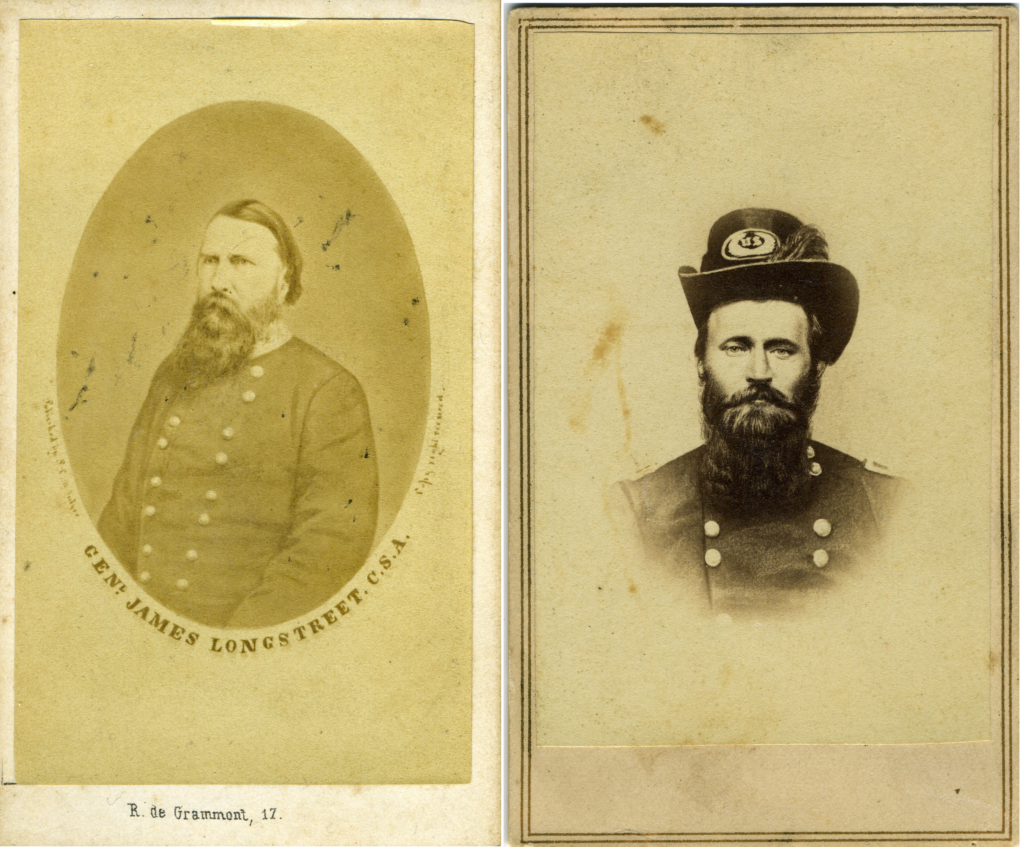Section #10 - A Manifest Destiny craze results in the Texas Annexation and a victorious war with Mexico
Chapter 118: War Breaks Out With Mexico
March 6, 1845 – November 10, 1845
An Angry Mexico Breaks Relations But Then Opens The Door To Negotiations
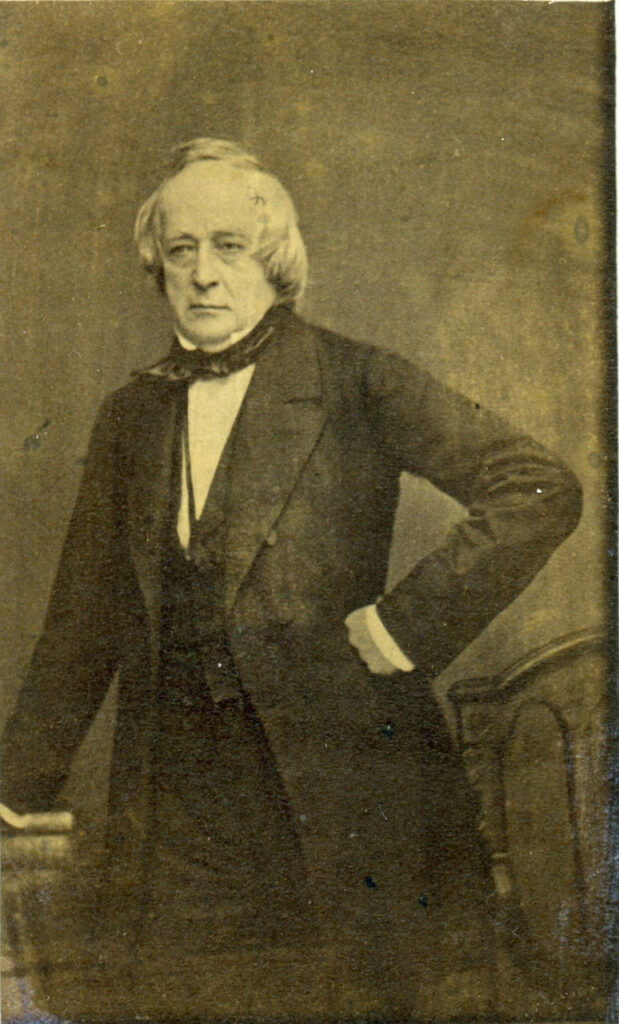
The Mexican government is predictably outraged by U.S. passage of the March 1, 1845 Annexation bill, and doubly so because it involves not only Texas proper (north and west of the Nueces River), but also another huge area of “claimed land” south to the Rio Grande.
They signal their anger on March 6, 1845, two days after Polk’s inauguration, by recalling their minister and severing diplomatic relations with Washington.
Anticipating possible hostilities, the President in May 1845 sends General Zachary Taylor and 2,400 troops to the Nueces River border of Texas “for defensive purposes.”
When Polk’s long-time mentor, Andrew Jackson, dies on June 8, 1845 at age 78, in Nashville, “Young Hickory” is left to stand on his own amidst the controversies.
Animosity toward Mexico builds into the summer, with public sentiment in favor of expansion further spurred by the journalist John L. O’Sullivan whose Democratic Review continues to assert that America’s “manifest destiny (is) to overspread the continent:”
It is now time for the opposition to the Annexation of Texas to cease, (for) our manifest destiny (is) to overspread the continent for the free development of our yearly multiplying miillions.
The strained relations continue until October, when Mexican President Jose Herrera, who hopes to avoid war, signals that he is willing to engage in talks about border issues, by which he means the original seizure of the Texas Republic. Polk seizes upon this apparent “opening” to not only resolve the “claimed land” borders to the Rio Grande, but also to explore Mexico’s willingness to part with additional territory west to California.
Louisiana Senator John Slidell is chosen by Polk as Minister to Mexico on November 10, and is sent on a mission to negotiate a trade of land for money – the Rio Grande border in exchange for forgiving a $3.5 million Mexican debt owed the U.S., the New Mexico territory for $5 million, and the ports of San Francisco and Monterrey for another $20 million.
He is also directed to inform Herrera that the U.S. would intervene in any move by Mexico to sell this land to a foreign power, such as Britain or France.
November 29, 1845 – April 24, 1846
Treaty Talks Stall And Shots Are Fired Along The Border
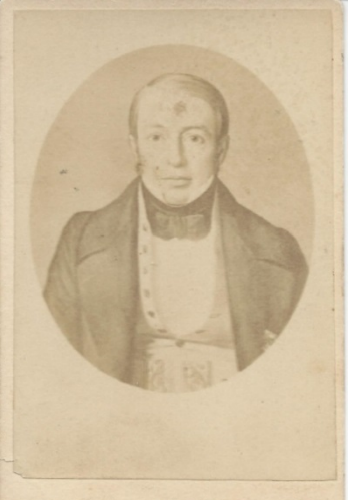
Paredes (1797-1849)
On November 29, 1845, Slidell arrives at the gulf port of Veracruz, ready to engage Herrera in Mexico City.
But Herrera’s tenure in office is about to end, as the hawkish General Mariano Paredes, who had previously ousted Santa Anna, marches on the capitol and takes power on December 30.
Slidell is now left in a holding pattern, waiting to learn Paredes stance on the border issues.
Polk, however, is not in a waiting mood.
When news of Paredes stalling tactics reach him on January 12, 1846, he orders Taylor’s forces to advance further southwest from the Nueces line, and across disputed land to the east bank of Slidell’s credentials as a diplomat. After standing idly by for over three months, the treaty mission officially ends in March 1846.
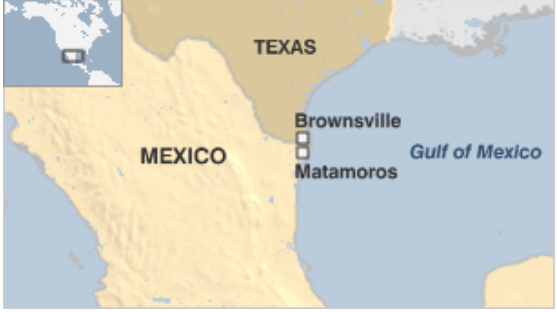
Meanwhile Taylor’s troops, now 3,500 men strong, are strung out along the north bank of the Rio Grande opposite the town of Matamoros, on the eastern side of the river.
On April 24, 1846, they are attacked by Mexican forces, with sixteen Americans killed in action.
May 13, 1846
Congress Declares War On Mexico
On May 8, Slidell is back in Washington briefing Polk and his cabinet on his failed mission to Mexico City.
The President finds “ample cause for war” in Parades’ treatment of Slidell, and is in the process of drafting a message to congress, when word reaches him that fighting has already broken out. Polk responds by sending up a declaration of war to Congress on May 13, confident that any hold-outs will now be ready to act.
His assessment proves right, and his request quickly passes the Senate by 40-2 and the House by 174-14.
The only declared opponents at that moment are a small cluster of House Whigs led by JQ Adams, Hannibal Hamlin of Maine, and Jacob Brinkerhoff of Ohio who join the avowed abolitionist Joshua Giddings in labeling the conflict an “aggressive, unholy, unjust war.”
May 1846
Polk Organizes His Forces As The Conflict Begins

On the day war with Mexico is declared, America’s military force is anemic.
Despite its actual and often anticipated conflicts with Britain, the notion of a large standing army is still seen by many as a potential threat to preserving the nation’s democracy. Should war break out, the fighting is to be done by a volunteer militia, led by a small Regular Army corps.
Officers for the army corps are trained since 1802 at the U.S. Military Academy in West Point, NY. But the academy is modestly funded, with a total of only 59 graduates in the entire renowned class of 1846.
Meanwhile the U.S. Naval Academy at Annapolis, Maryland, has just opened its doors on October 10, 1845, as the brainchild of George Bancroft, Polk’s Secretary of the Navy.
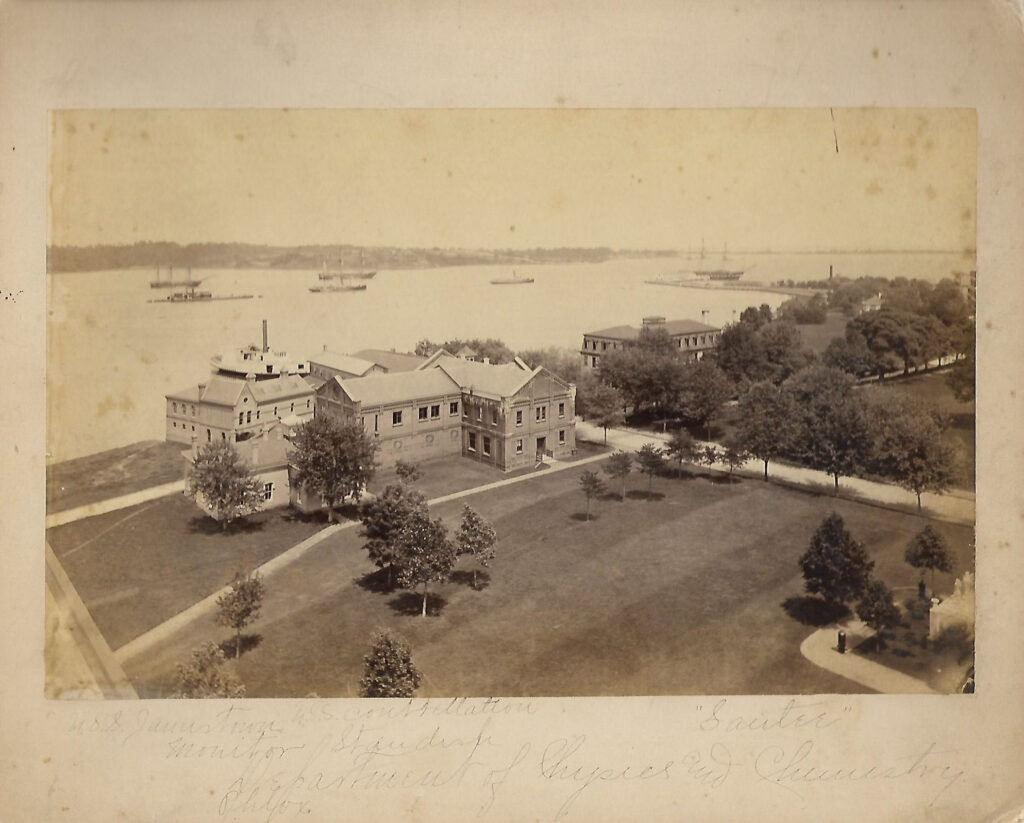
On May 13, 1846, muster for the Regular Army stands at a mere 6,562 men comprising 14 regiments, with eight infantry, four artillery and two dragoons (mounted troops). To bolster this count, Polk asks Congress to fund an additional 50,000 volunteers.
On top of the need for more volunteers, Polk faces another challenge in deciding who should command his expeditionary army.
The obvious choice as overall leader is Major General Winfield Scott, the ranking officer in the army since his June 1841 promotion. Scott is 59 years old when war is declared and has served his country since 1809. He becomes a Brigadier General at twenty-seven after being severely wounded at Lundy’s Lane in the War of 1812. From there he is called upon by one president after another to oversee any and all military crises.
Polk’s reservations about naming Scott to lead the troops in Mexico are political in nature.
While the imposing 6 foot 5 inch tall general grows up on a Virginia plantation, he is an outspoken critic of slavery and a Whig who has already been considered for the presidency in 1840, before the nomination goes to William Henry Harrison. As such Polk views him more as a political competitor than a military subordinate.
Given this, Polk decides to leave Brigadier General Zachary Taylor in command, since he is already in action on the Rio Grande and, unlike Scott, professes no interest in politics, at least so far.
May 3-8, 1846
The Opening Battle For Fort Texas
As the war begins, Taylor’s initial strategy is two-fold:
- Meet and defeat the Mexican forces at the southern tip of the Rio Grande, and then move inland to the immediate west; and
- Send troops to occupy the northern provinces of New Mexico and Alto California so these can become U.S. territory when the conflict is over.
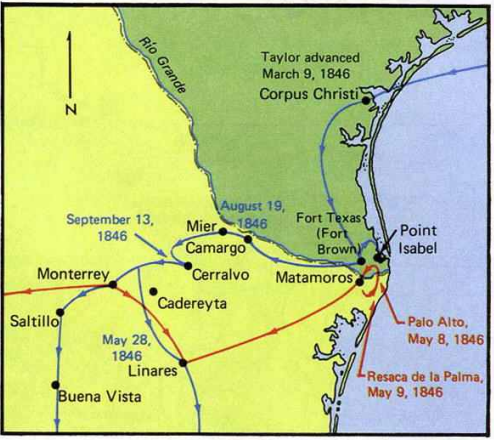
The hard fighting is underway for ten days before the official May 13 declaration passes Congress.
The first objective for the Mexicans is a star-shaped earthen defense outpost that Taylor’s troops have built on the east side of the Rio Grande. It is christened Ft. Texas, and later re-named Ft. Brown, after the heroic major who falls there. It is occupied by only 500 U.S. troops, and General Mariano Avista begins to shell it on May 3 from his side of the river in Matamoros. He then advances across the river, surrounds the fort, and begins an all-out siege.
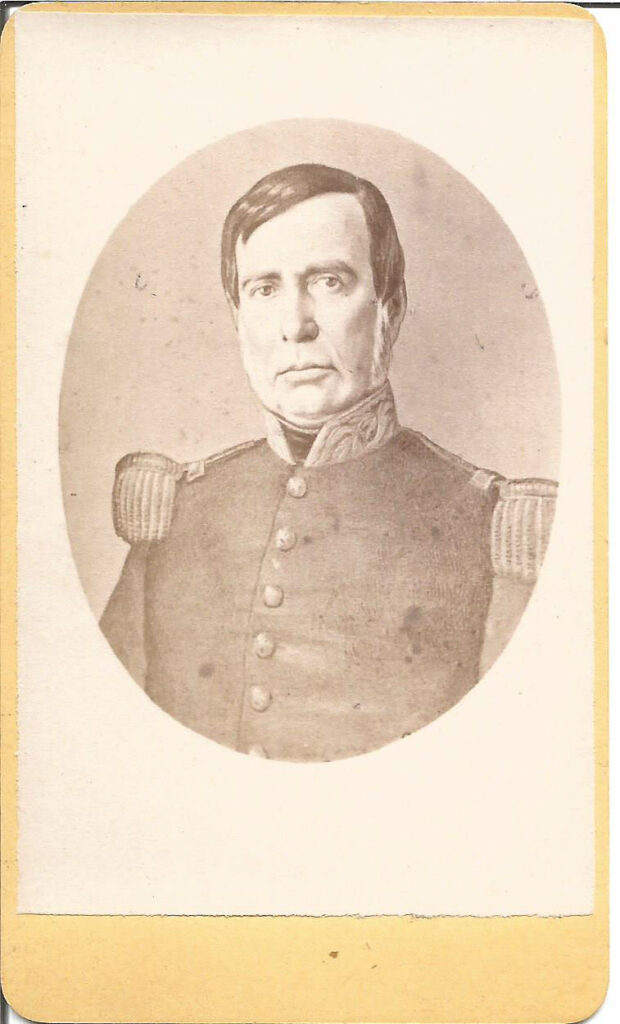
After five days of steady bombardment, the fort is still holding out, when Taylor, stationed 22 miles away to the east at Fort Isabel, sets out with 2200 men and 150 wagons to relieve the pressure. General Avista hears of the movement and pivots the troops he has north of Ft. Texas, heading out along the Point Isabel Road to intercept Taylor.

May 8-9, 1846
Taylor Wins His First Victories At Palo Alto And Resaca De La Palma
Taylor is outnumbered by Avista – on the order of two to one — when the armies meet on May 8 on an open plain bordering the high chaparral, or shrubland, known as Palo Alto.
The action is particularly bloody, since neither side entrenches and there are no natural walls or fences to provide protection from artillery fire.
Over a five hour period, repeated changes by the Mexican infantry and dragoons are repulsed by the American’s “flying artillery,” lightweight cannon with exploding shells maneuvered by horses to critical areas of the field. Avista finally abandons his attack, with casualties upwards of 600 killed or wounded vs. Taylor’s losses reported at 4 killed and 37 wounded.
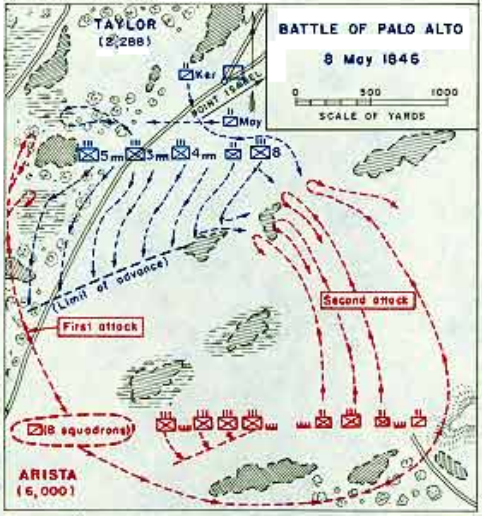
On the morning of May 9, the Mexicans fall back in good order some five miles to defensive fortifications they had previously prepared along the Point Isabel road to Fort Texas. Taylor chases after him.
Fronting the Point Isabel road is an ancient run-off channel of the Rio Grande, known locally as Resaca de la Palma, a ravine with waist-deep water surrounded by palm trees and other shrubs. Arista locates his HQ to the south while arraying his troops (in red on the maps) along the arc of the ravine, both west and east of the road.
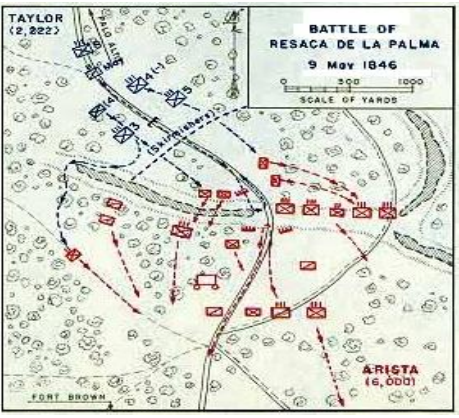
Palo Alto And Ft. Texas
His position is a strong one, and Taylor attacks it head on from the northwest. One of his young lieutenants is Ulysses S. Grant, who describes his early assault as follows:
I was with the right wing and led my company through the thicket wherever a penetrable place could be found…that would carry me to the enemy. At last I got pretty close up without knowing it. The balls commenced to whistle very thick overhead cutting the limbs of the chaparral left and right.
Another later-to-be-famous warrior, Lt. James Longstreet, offers his memories of the fight:
After a considerable march the battalion came to the body of a young Mexican woman. This sad spectacle unnerved us a little, but the crush through the thorny bushes brought us back to thoughts of heavy work…All of the enemy’s artillery opened, and soon his musketry. The lines closed in to short work, even to bayonet work at places….A pause was made to dip our cups for water, which gave a moment for other thoughts; mine went back to her whom I had left behind. I drew her daguerreotype from my breast pocket, had a glint of her charming smile, and with quickened spirit mounted the bank (ahead).
The Americans continue this “heavy work” against the Mexican lines throughout the afternoon. They finally break through after a small force under Captain Robert Buchanan flanks the defender’s left wing and comes up in the rear of Arista’s men. This surprise infiltration collapses the Mexican’s line, wins the battle, and initiates a panicked 200 mile retreat due west to their bastion at Monterrey.
During the two days of fighting, the Americans suffer 34 killed and 113 wounded, while the Mexicans lose over 1500 men, killed, wounded or drowned during flight, along with the capture of 7 major artillery pieces.
With these opening victories, the Americans secure the Rio Grande border, demonstrate their tactical superiority on the battlefield, and prepare to drive further west into the interior of Mexico.
